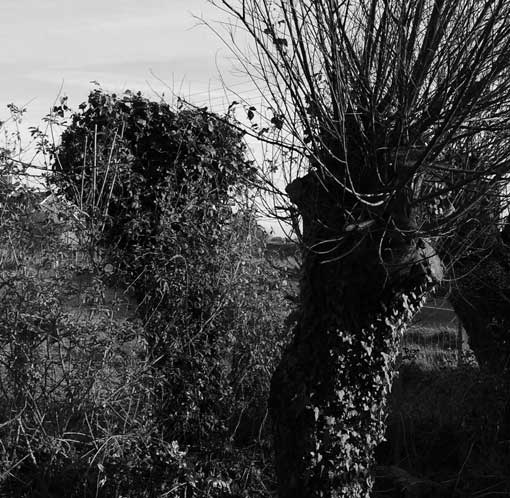Pollarded? We were damn near coppiced!

We had a couple of trees pollarded this week. That one on the left? The thing that looks like a stump? That’s one. The tree on the right was pollarded some years ago.
Pollarding is a form of arboriculture practiced around these parts since the far off misty mists of time. You take a tree and lop it straight off about ten feet up from the ground. After which the cutoff bit explodes in new growth: long, straight new branchlets. After five or seven or fourteen years, you lop these off for firewood, or nice straight structural members, or weaving baskets.
Only some kinds of tree will put up with this abuse (ours are willows, I think) but, believe it or not, pollarded trees are healthier and live far longer than maiden (unpollarded) trees. They aren’t top-heavy, they don’t have gnarly branches to split off and they are apparently metabolically in a state of perpetual adolescence. It’s good for the ecowotsit of the forest, too: it lets light in for richer undergrowth and little animules. Hippies love it, though, so…grain of salt.
Coppicing is similar, but they slice off the trees only a couple of feet from the ground. This won’t do if you have livestock or wild deer that would nibble at any new growth.
Once trees have been pollarded, you can let them go wild again. This ultimately results in extraordinarily top-heavy trees and very, very little light penetration. Dark, creepy woods, in other words. Epping Forest is apparently like this. Some of the twisty, spooky trees you see in churchyards — where the upper branches writhe out of gnarly fists — were formerly pollarded.
We only have a small cluster of pollarded trees at the end of the drive, and we contemplated letting them go. But the lads talked us into having them done.
The lads. Yes. We has gardeners!
April 8, 2009 — 8:06 pm
Comments: 12












